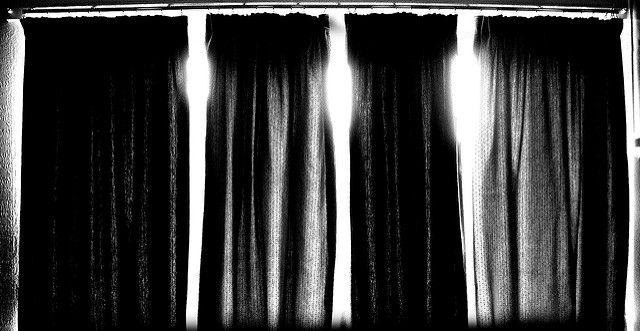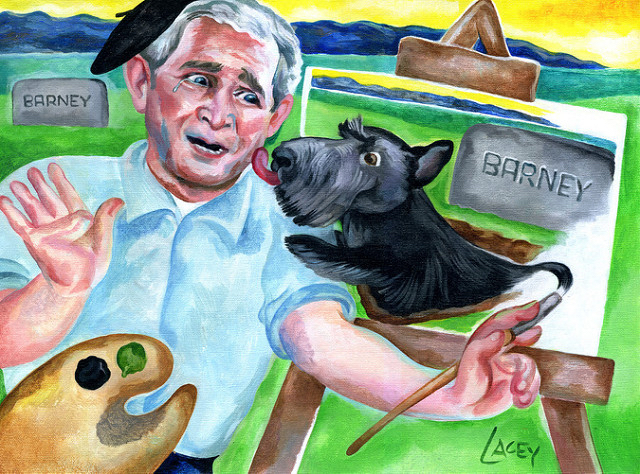Once you’ve seen the original photograph, this exercise in “Photoshopping” is understandable. But my first-year university students, trying to make sense of Claudia Rankine’s brilliant book Citizen have not. To them, it’s just a perplexing image of white people from long ago, turning around to look at the camera in front of the dark shape of a tree looming against an even darker sky.
We read aloud the two pages that precede the altered photograph, similarly disorienting for young people who have little experience of poetry that hasn’t been pre-packaged for them by a high-school curriculum. The double and triple-meanings prove particularly challenging: “I say good-bye before anyone can hang up. Don’t hang up. My brother hangs up though he is there. I keep talking. The talk keeps him there. The sky is blue, kind of blue. The day is hot. Is it cold? Are you cold? It does get cool. Is it cool? Are you cool?”
Later that day, many of these students are going to join me for the reading Rankine is giving here at the University of Arizona. I have a feeling it will be an intense experience and don’t want to lessen the impact. At the same time, I know that not all of them will be there — it’s Friday night, after all — and that some of those that do make the event won’t know enough about her subject matter for its full significance to be clear.
So I spend the class trying to provide a context for Citizen’s artful juxtaposition of word and image, reflecting on the existential predicament of black Americans, who have been simultaneously rendered invisible and too visible in our society. We discuss how injuries inflicted by physical force do and do not differ from those inflicted by language, coming back around to the concept of “body language” as a way, perhaps, to bridge the gap between them. And then I turn back to the book.
It soon becomes apparent that, even though most of my students must have learned something about American racial politics in their high-school classes, few had been made to confront the full ugliness of white supremacy. Photographs like the one we are looking at were not part of the curriculum, whether for defensible reasons — because they might traumatize students of color, say — or not.
The discussion of lynching that ensues is one of the most uncomfortable ones I’ve had to conduct. But when I witness Claudia Rankine’s reading that evening, I am very glad not to have shied away from the subject. With a remarkable combination of ease and intensity, she walks the standing-room audience through a series of Citizen’s images, projected onto the large screens behind her, and their accompanying texts. At times, it almost feels like she is lulling us to sleep with asides about the artists she collaborated with and the process of obtaining their work.
And then she comes to the pages we discussed in my class earlier that day.
The altered photograph from the book appears on the left, the original on the right. One of my students is sitting nearby and I hear her gasp as she sees the two men hanging from the branch of the tree. Rankine is detailing the difficulty she had getting permission to use this particular photograph, how she had to convince its owners that she wasn’t going to use it to support a white-supremacist agenda. It’s hard to concentrate, though, when you have come face to face with one of your people’s worst moments. All around me, I can feel people wanting to look away from the horrific spectacle but not having the power to do so.
Rankine has us where she wants us, where she needs us to be. She decided to black over the bodies of the men, she explains, because they aren’t the part of the photograph that interests her: “I’m not interested in replicating sentimentality around the murder of black people. I am interested in the ways in which the culture has suppressed the culpability and support of white citizens of these kinds of murder. So I was just interested in those people in that photo, who are really you people in this room, in one way or another.”
The room makes the sound a plastic bag does when you suck all the air out of it. It’s a moment of inexpressible power and horror. I read the questions on the faces of my fellow audience members. Did she really just say that? What does that say about me? It’s hard to regain one’s bearings. But Rankine is still talking and the audience gradually regains its focus.
She tells a story about how her husband, who is white, once attended a Super Bowl party without her, but came home early. While watching the game, one of the guests had used the N-word to refer to a football player. The host sent her an apology afterwards, she notes, even though she wasn’t there. But she wonders what would have happened if her husband hadn’t been present. Would the other guests have just let the comment slide?
“I don’t know what happens when I’m not in the room,” she continues. Because of her husband, though, she has a much clearer sense of how whiteness expresses itself in the absence of color. She looks out at the audience. “I know that you all are in rooms where stuff is happening that shouldn’t be happening. And, in that way, you are those people in that photo.”
Our next class is the following Monday. I begin by talking about the reading, how much it affected me. The students who were there concur. Then we begin the difficult process of trying to make sense out of senselessness. Another brother has been shot dead by the police, for no apparent reason, this time in Tulsa, Oklahoma and there is incontrovertible documentary evidence this time to prove it. It’s the same old story. It’s a story that we need to change.
“Trauma and identity”, I write on the whiteboard, then “How does pain shape how we perceive ourselves?” and, below that, “Difficulty of expressing pain” and “PTSD”. I explain how the latter derived from the concept of shell-shock developed during World War I, then saw the scope of its usage expand to include other injuries that affect the mind as much as the body, like rape.
The next forty-five minutes are exhausting, but also give me hope, because it is clear that at least some of my students are able to see themselves in that photograph, taken in Indiana back in 1930, without immediately suppressing the disturbing insight it provides. At the end of class, one of them comes up to me and asks how he might obtain another copy of the book for a friend who is struggling with feelings of not belonging. I tell him where to ask for a free copy. “But if they don’t have any more,” I add, “I’ll give you mine.”
Featured photo by Jonathan Kim, published under a Creative Commons license. Photo of Claudia Rankine reading courtesy of the author






